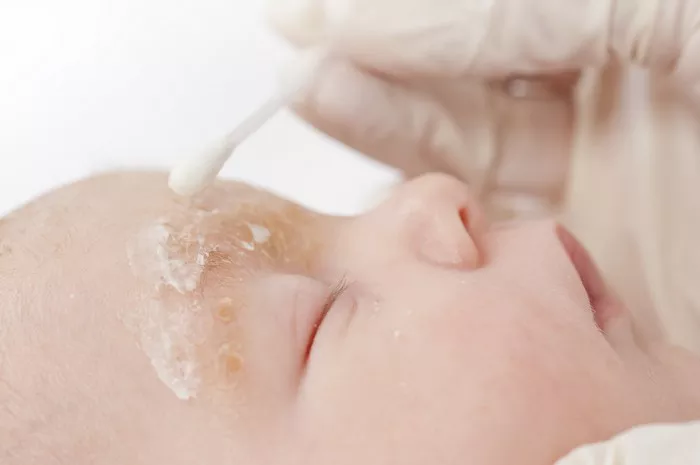Seborrheic dermatitis is a common skin condition that affects many adults. It primarily affects areas of the body with a high concentration of oil glands, such as the scalp, face, and chest. While seborrheic dermatitis is not dangerous, it can be uncomfortable and cause flare-ups of itchy, flaky skin. One of the most common questions adults ask is: how long does seborrheic dermatitis last? The answer to this question varies, as it depends on several factors, including the individual’s overall health, the severity of the condition, and the effectiveness of the treatments used.
This article will provide an in-depth look at seborrheic dermatitis, its symptoms, potential causes, and how long it tends to last in adults.
What Is Seborrheic Dermatitis?
Seborrheic dermatitis is a chronic skin condition that causes scaly patches, redness, and dandruff-like flakes, particularly in oily areas of the body. It is believed to be related to a combination of genetics, environmental factors, and an overgrowth of a yeast-like fungus called Malassezia, which naturally lives on the skin.
The condition is sometimes referred to as dandruff when it affects the scalp, but it can also occur on other parts of the body, such as the eyebrows, nose, and chest. Seborrheic dermatitis is a long-term condition, but its severity can fluctuate, with periods of improvement followed by flare-ups.
SEE ALSO: Understanding the Causes of Dyshidrosis
Symptoms of Seborrheic Dermatitis in Adults
The symptoms of seborrheic dermatitis can vary in intensity, but they often include:
- Red, inflamed skin
- Flaky, white or yellowish scales
- Greasy patches on the scalp, face, or chest
- Itching or burning sensation
- Crusty, scaly skin around the eyebrows, nose, or ears
- Dandruff that is resistant to regular treatment
For many adults, seborrheic dermatitis can be a lifelong condition, but the frequency and severity of flare-ups can be managed with proper care and treatment.
How Long Does Seborrheic Dermatitis Last?
The duration of seborrheic dermatitis varies greatly from person to person. In some cases, it may last only a few weeks, while for others, it can persist for months or even years.
Acute Flare-Ups
Seborrheic dermatitis often presents in cycles of flare-ups and remissions. During an acute flare-up, the condition can last anywhere from several days to a few weeks. Flare-ups can be triggered by a variety of factors, including:
- Stress
- Hormonal changes
- Cold, dry weather
- Illnesses that weaken the immune system
These acute episodes may subside with treatment, but without proper care, they can return frequently.
Chronic Condition
For many adults, seborrheic dermatitis is a chronic condition that does not completely go away. While it can be controlled with regular treatment, it may recur throughout a person’s life. Some individuals may experience long periods of remission where symptoms are minimal or nonexistent, followed by periods of exacerbation where symptoms worsen.
The chronic nature of seborrheic dermatitis means that while treatments can help reduce symptoms, the condition is often not fully curable. Instead, individuals must focus on managing flare-ups and preventing them from worsening.
Factors That Influence the Duration of Seborrheic Dermatitis
Severity of the Condition
The severity of seborrheic dermatitis plays a major role in how long the condition lasts. Mild cases may resolve within a few weeks with appropriate treatment, while severe cases can persist for much longer. Individuals with more extensive skin involvement or more frequent flare-ups may find that the condition lasts for months or even becomes a lifelong issue.
Treatment Adherence
How long seborrheic dermatitis lasts also depends on how well an individual follows their treatment plan. Those who consistently use prescribed medications, topical treatments, and follow their dermatologist’s advice may find that their symptoms improve more quickly and that flare-ups are less frequent.
On the other hand, individuals who neglect treatment or only seek care during severe flare-ups may experience longer-lasting symptoms and more frequent recurrences.
Underlying Health Conditions
Certain health conditions can affect the duration and severity of seborrheic dermatitis. Adults with weakened immune systems, such as those with HIV or autoimmune disorders, may experience more severe and prolonged symptoms. Additionally, individuals with conditions such as Parkinson’s disease or mood disorders have been shown to be more prone to severe, long-lasting seborrheic dermatitis.
Common Triggers for Seborrheic Dermatitis Flare-Ups
Flare-ups of seborrheic dermatitis can be triggered by several factors. Identifying and managing these triggers can help reduce the duration and severity of flare-ups.
Stress
Stress is a well-known trigger for seborrheic dermatitis. When the body is under stress, the immune system’s response can change, leading to an increase in inflammation and a flare-up of symptoms. Managing stress through relaxation techniques, regular exercise, and adequate sleep can help reduce flare-ups.
Weather Changes
Cold, dry weather often worsens seborrheic dermatitis, as the skin becomes more prone to dryness and irritation. During winter months, flare-ups may last longer. Conversely, hot, humid weather can sometimes exacerbate the condition by increasing the production of oil on the skin.
Hormonal Changes
Fluctuations in hormones can also play a role in triggering flare-ups. This is why some individuals may notice their seborrheic dermatitis worsening during pregnancy, menopause, or during times of hormonal imbalance.
Dietary Factors
While diet alone does not cause seborrheic dermatitis, certain foods may trigger or worsen the condition for some people. High-sugar or high-fat diets, alcohol, and processed foods can lead to inflammation and may prolong the duration of a flare-up.
Treatments for Seborrheic Dermatitis
Seborrheic dermatitis can be treated with a variety of topical and systemic treatments, which can help reduce symptoms and shorten the duration of flare-ups. Some of the most common treatments include:
Medicated Shampoos and Creams
Over-the-counter medicated shampoos containing ingredients such as ketoconazole, selenium sulfide, or zinc pyrithione can help control dandruff and scalp symptoms. Prescription-strength shampoos or creams may be necessary for more severe cases.
Antifungal Treatments
Since seborrheic dermatitis is often associated with an overgrowth of Malassezia, antifungal creams or oral antifungal medications may be prescribed to reduce yeast growth and clear up symptoms more quickly.
Topical Corticosteroids
In more severe cases, a dermatologist may prescribe topical corticosteroids to reduce inflammation and itching. However, these should be used sparingly, as long-term use of steroids can lead to skin thinning.
Moisturizers and Emollients
Using gentle moisturizers and emollients can help soothe dry, irritated skin and reduce the duration of flare-ups. Products that are fragrance-free and designed for sensitive skin are ideal for preventing further irritation.
Light Therapy
For individuals with persistent, severe seborrheic dermatitis, light therapy (phototherapy) may be recommended. This treatment involves exposing the skin to controlled amounts of ultraviolet (UV) light to reduce inflammation and control symptoms.
Lifestyle and Home Remedies to Shorten Flare-Ups
In addition to medical treatments, there are several lifestyle changes and home remedies that can help reduce the duration and severity of seborrheic dermatitis.
Maintain a Regular Skincare Routine
Keeping the skin clean and moisturized is crucial for managing seborrheic dermatitis. Using gentle, non-irritating cleansers and moisturizing regularly can help prevent flare-ups from lasting too long.
Avoid Harsh Hair and Skin Products
Certain hair and skin care products, especially those containing alcohol, fragrances, or harsh chemicals, can irritate the skin and prolong the duration of seborrheic dermatitis. Opt for hypoallergenic products that are free of these irritants.
Use Warm, Not Hot, Water
When washing your face or scalp, use lukewarm water instead of hot water. Hot water can strip the skin of natural oils and lead to dryness, which can exacerbate seborrheic dermatitis.
Conclusion
So, how long does seborrheic dermatitis last in adults? The answer depends on several factors, including the severity of the condition, the individual’s overall health, and the effectiveness of treatment. While seborrheic dermatitis is often a chronic condition that may not go away completely, it can be managed with the right treatments and lifestyle changes. Most flare-ups last anywhere from a few days to a few weeks, but with consistent care, adults can reduce the frequency and duration of their symptoms, leading to a better quality of life.
Related topics:

























